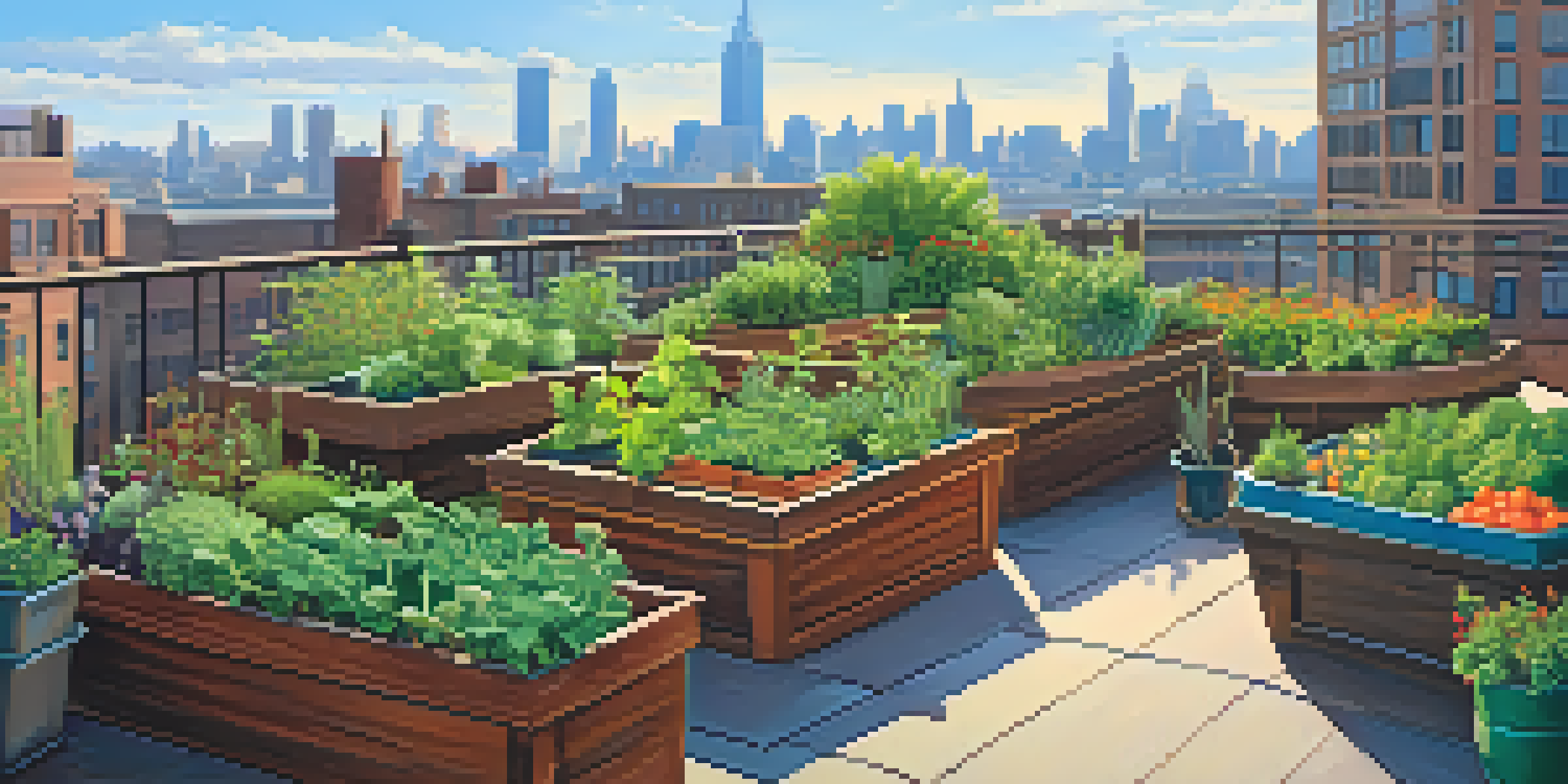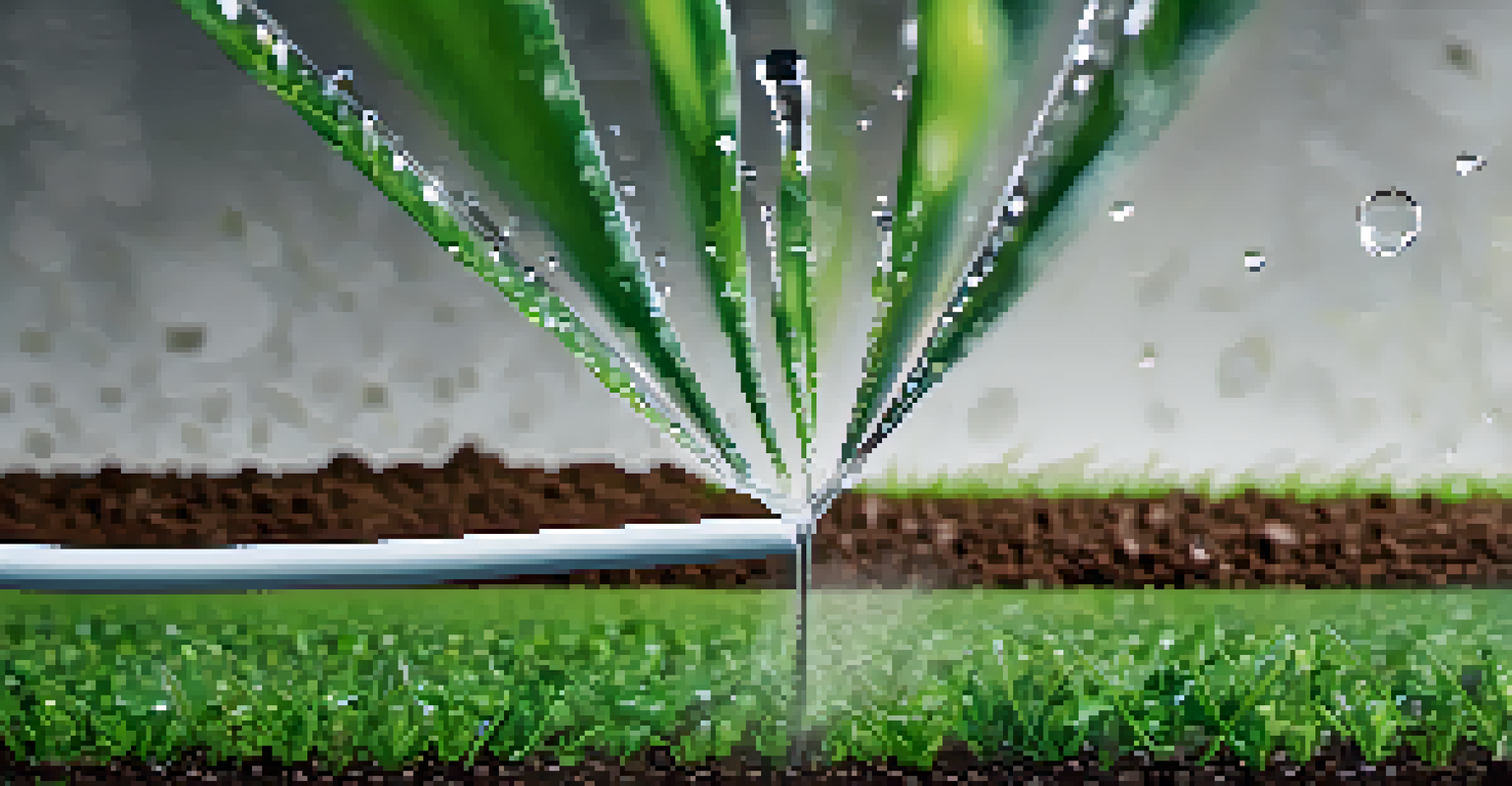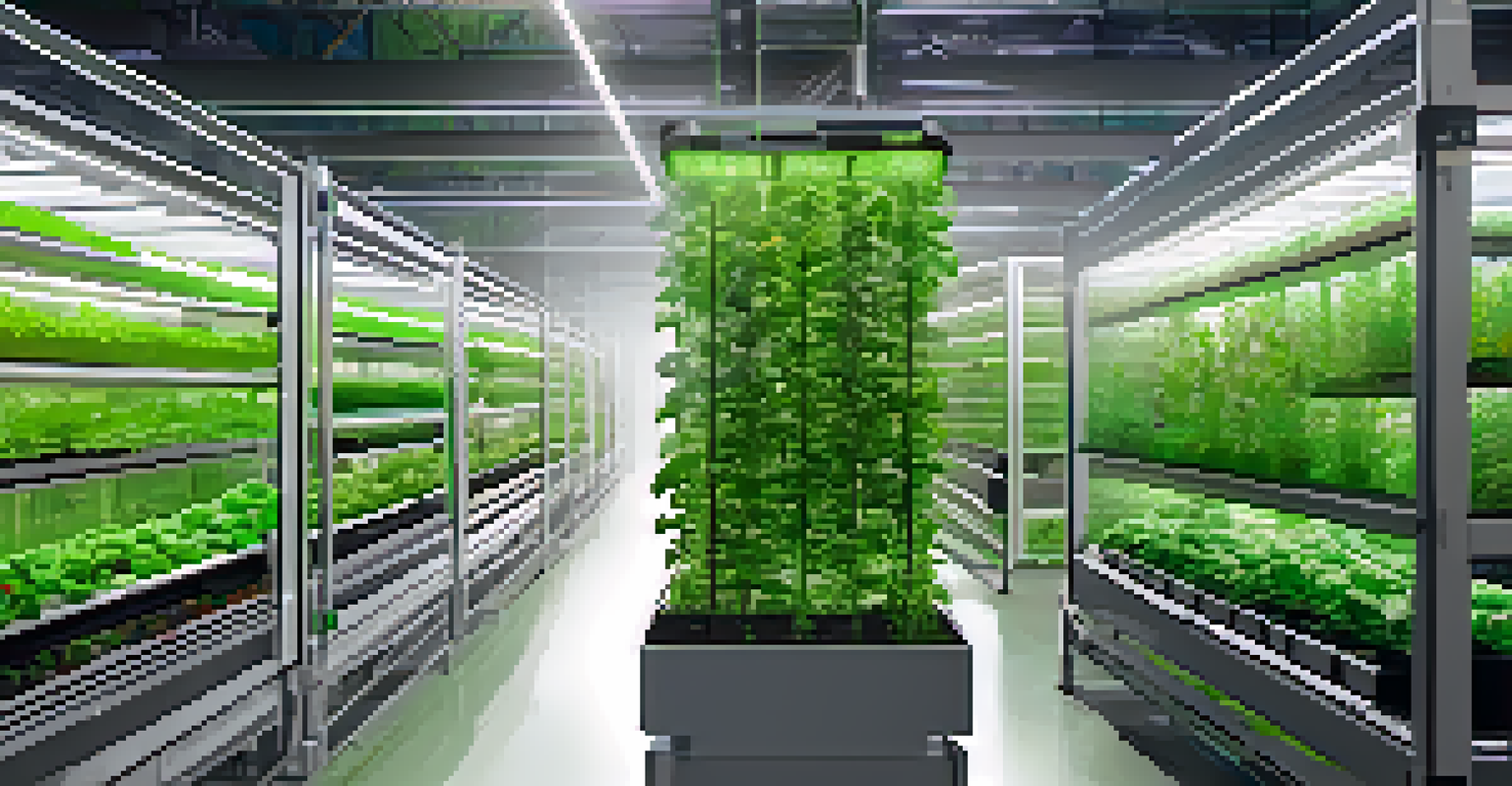Urban Agriculture: IoT Innovations for Food Security

Understanding Urban Agriculture and Its Importance
Urban agriculture refers to the practice of cultivating, processing, and distributing food in or around urban areas. This approach not only helps meet the growing food demands of city dwellers but also promotes sustainability and reduces the carbon footprint associated with transporting food. With more than half the world's population living in cities, urban agriculture plays a crucial role in ensuring food security.
Urban agriculture is not just about growing food; it's about growing community.
By utilizing available spaces such as rooftops, community gardens, and vacant lots, urban agriculture transforms cities into green zones. This not only enhances the urban landscape but also fosters community engagement and education about food production. As more people become aware of the benefits of fresh, locally grown produce, urban agriculture is gaining momentum as a viable food source.
Moreover, urban agriculture is a response to the challenges posed by climate change, as it can lessen the reliance on long supply chains and encourage resilience within communities. Innovations in technology are further enhancing its potential, making it an exciting field to explore, especially with the advent of the Internet of Things (IoT).
The Role of IoT in Urban Agriculture
IoT, or the Internet of Things, refers to the interconnected network of devices that communicate and share data. In urban agriculture, IoT devices—such as sensors, drones, and automated irrigation systems—collect valuable information about environmental conditions. This data allows farmers to make informed decisions about planting, watering, and harvesting crops, ultimately maximizing yields.

For example, soil moisture sensors can alert urban farmers when their plants need water, helping to conserve resources and ensure healthier crops. Additionally, IoT technology can monitor temperature and humidity levels, allowing for optimal growth conditions. This level of precision not only boosts productivity but also reduces waste, making urban agriculture more sustainable.
Urban Agriculture Enhances Food Security
By utilizing available urban spaces for food production, urban agriculture addresses the food demands of growing city populations while promoting sustainability.
As cities continue to grow, the integration of IoT in urban farming practices becomes increasingly essential. By streamlining operations and enhancing efficiency, IoT can help urban farmers tackle the challenges of food security while promoting a more sustainable future.
Smart Irrigation Systems: A Game Changer
One of the standout innovations in urban agriculture is smart irrigation systems, which utilize IoT technology to optimize water usage. These systems incorporate moisture sensors and weather forecasts to determine the precise watering needs of plants, ensuring they receive just the right amount of water. This not only conserves water but also prevents overwatering, which can harm plant health.
The future of farming is not on the farm; it's in the city.
For instance, a smart irrigation system can automatically adjust the watering schedule based on real-time data, reducing the need for manual intervention. This is particularly beneficial in urban settings where water resources may be limited. By employing such technology, urban farmers can manage their water usage more effectively, contributing to overall food security.
Additionally, smart irrigation systems can be controlled remotely through smartphone applications, further enhancing convenience. This seamless integration of technology into farming practices empowers urban farmers to be more proactive and responsive to their crops' needs.
Vertical Farming: Maximizing Space in Cities
Vertical farming is another innovative approach that complements urban agriculture by utilizing multi-layered growing systems. This method allows for the cultivation of crops in vertically stacked layers, significantly maximizing space in urban environments. With land at a premium in cities, vertical farming offers a practical solution to grow more food in limited areas.
IoT technology plays a crucial role in vertical farming by automating processes like lighting, temperature control, and nutrient delivery. For example, sensors can monitor plant growth and adjust the artificial lighting accordingly, ensuring optimal conditions for photosynthesis. This level of control leads to faster growth cycles and higher yields, which is essential for meeting urban food demands.
IoT Revolutionizes Urban Farming
The integration of IoT technology in urban agriculture allows farmers to optimize resources, monitor crops, and make data-driven decisions to enhance productivity.
Moreover, vertical farms can be established in repurposed buildings, such as warehouses or shipping containers, further reducing the environmental impact. By integrating vertical farming with IoT, urban agriculture can become more efficient and sustainable, providing fresh produce to city residents year-round.
Data-Driven Decision Making in Urban Agriculture
The use of data analytics in urban agriculture is revolutionizing how farmers make decisions about their crops. By collecting data through IoT devices, urban farmers can analyze factors such as soil quality, pest activity, and crop performance. This information empowers them to implement targeted strategies that enhance productivity and reduce losses.
For instance, predictive analytics can help farmers anticipate pest outbreaks, allowing them to take preventative measures before damage occurs. Additionally, understanding soil health through data analysis can inform crop rotation and planting strategies, ensuring long-term sustainability. This data-driven approach not only boosts yields but also contributes to more resilient urban food systems.
Ultimately, the integration of data analytics into urban agriculture fosters a culture of continuous improvement. As farmers become more adept at interpreting data, they can refine their practices and adapt to changing environmental conditions, ensuring food security in the face of urbanization.
Community Engagement and Education in Urban Farming
Urban agriculture is not just about food production; it also plays a vital role in community engagement and education. By involving local residents in farming initiatives, cities can foster a sense of ownership and responsibility towards food systems. Community gardens and urban farms often serve as educational hubs, teaching residents about sustainable practices and nutrition.
Through workshops and hands-on experiences, individuals can learn how to grow their own food, leading to increased awareness about the importance of local food sources. This education can also empower individuals to make healthier dietary choices, benefiting overall community health. Engaging the local community in urban farming initiatives creates a shared purpose and strengthens social ties.
Community Engagement Boosts Urban Farming
Involving local residents in urban farming initiatives fosters a sense of ownership and promotes education about sustainable practices and nutrition.
Furthermore, community-driven urban farming projects can promote inclusivity and diversity, encouraging participation from various demographics. By collaborating with schools, nonprofits, and local governments, urban agriculture can create lasting impacts that extend beyond the garden beds.
Challenges and Future of IoT in Urban Agriculture
While IoT innovations in urban agriculture present exciting opportunities, they also come with challenges. Issues such as data privacy, technology costs, and the need for technical expertise can hinder widespread adoption. Additionally, not all urban areas have equal access to the necessary technology or resources, which can create disparities in food security.
However, as technology continues to evolve, solutions are emerging to address these challenges. For instance, open-source platforms and community-based initiatives are making IoT tools more accessible to urban farmers. Collaborative efforts between tech companies, agricultural organizations, and local governments can help bridge the gap and ensure that all communities benefit from these innovations.

Looking ahead, the future of IoT in urban agriculture is promising. As cities prioritize sustainability and food security, we can expect to see increased investment in technology that supports urban farming. By embracing these innovations, urban agriculture can thrive, contributing to the resilience and health of our urban environments.